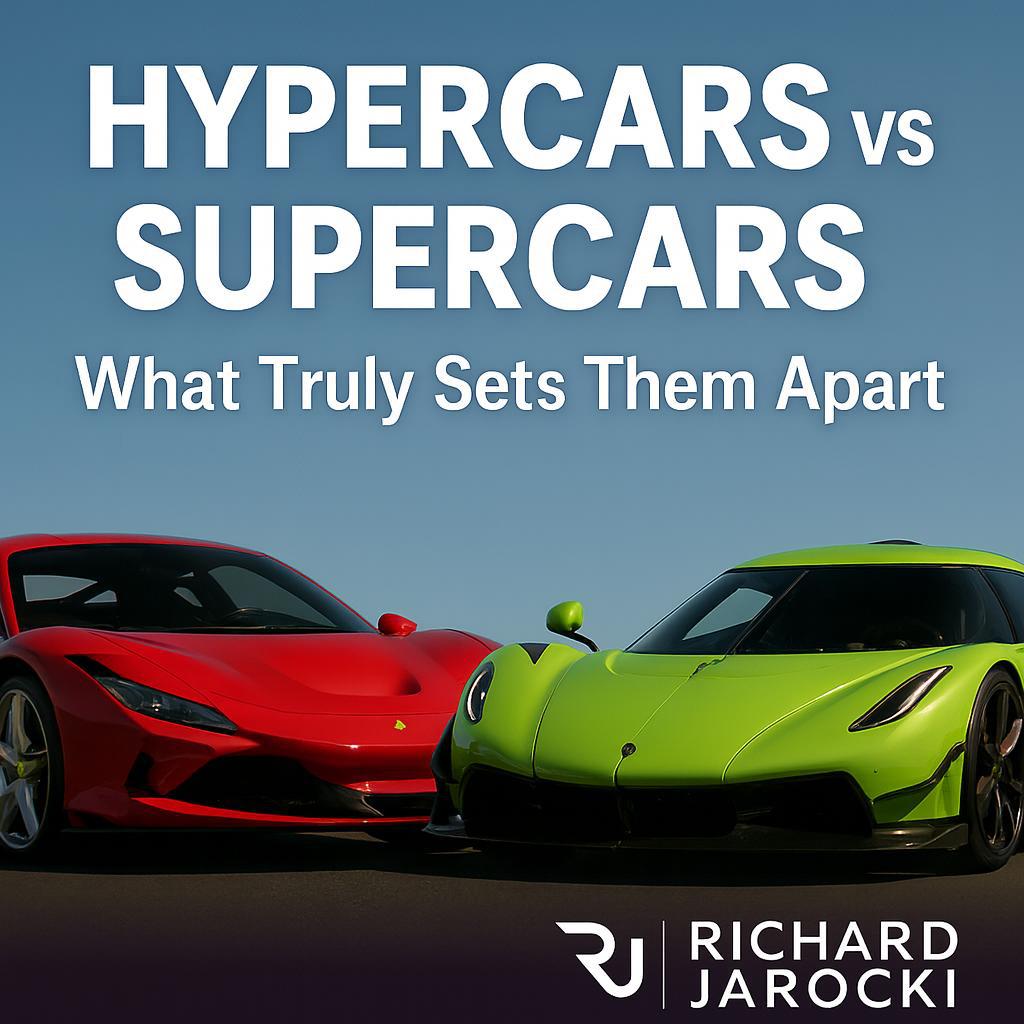
When it comes to high-performance, high-prestige machines, the terms "supercar" and "hypercar" get thrown around a lot. But while they both sit atop the automotive pyramid, they are not interchangeable. A hypercar isn’t just a faster supercar. It’s something rarer, more extreme, and often, more unattainable.
Let’s break down what truly sets them apart—from performance and rarity to technology, price, and cultural cachet.
Supercar: A road-legal, exotic performance machine with aggressive styling, track-ready handling, and a price tag that starts around $200,000+. Think Ferrari 296 GTB, Lamborghini Huracán, or McLaren Artura. These cars offer blistering performance, but are made in relatively large numbers.
Hypercar: The top 1% of that world. Hypercars push boundaries in every category: powertrain innovation, aerodynamics, materials, and exclusivity. They aren’t just fast—they redefine what’s possible. Think Bugatti Chiron, Koenigsegg Jesko, Aston Martin Valkyrie, or the McLaren Senna. Hypercars are often built in limited runs of 500 or fewer units and usually cost $1M+.
This is where the lines are clearest.
Supercars are exclusive, but not rare. Ferrari produces 15,000+ 488 GTBs. Lamborghini Huracáns have surpassed 20,000 units. Even Porsche's top-tier 911 Turbo S models sell over 40,000 units a year. These cars are expensive and elite, but you’ll still see them in Monaco or Miami.
Hypercars, on the other hand, are scarce by design. Most are produced in runs of 50 to 500 units, and almost always sell out before the first car is delivered.
This kind of exclusivity drives demand and long-term value. For many hypercars, ownership is by invitation or vetting. It’s not just about affording one—it’s about qualifying.
Supercars are no slouches—most clock 0–60 mph in under 3 seconds and have top speeds north of 200 mph. But hypercars? They take it even further:
The Koenigsegg Jesko Absolut is targeting over 310 mph. The Rimac Nevera does 0–60 in 1.74 seconds. The AMG ONE uses a Formula 1 engine detuned for the street. Hypercars aren’t just fast—they defy physics.
Hypercars are rolling laboratories. They debut materials and tech that trickle down into supercars years later. Examples:
Supercars also use advanced tech, but hypercars are where the manufacturers flex their deepest R&D.
It’s not just MSRP—it’s how the price reflects exclusivity. The cost to buy in is only part of the game. Maintaining and insuring a hypercar can cost more annually than an entire supercar.
Supercars turn heads. Hypercars stop traffic.
Supercars represent success. Hypercars represent access. A Huracán says "I've made it." A Valkyrie or Senna says "I'm on a different level."
Hypercars also serve as collector assets—many owners never drive them. They appreciate in value, show up at Pebble Beach or Art Basel, and become centerpiece investments.
Some cars exist in a middle space:
The line isn’t always perfect—but that’s what makes this world so exciting.
Understanding this distinction helps:
Owning a hypercar is as much about timing, access, and relationships as it is about money.
Q: Can a supercar become a hypercar over time?
A: Not exactly. A supercar may gain legendary status, but unless it meets the exclusivity, price, and innovation criteria of a hypercar, it stays in the supercar class—even if its value rises.
Q: What is the rarest hypercar?
A: Some of the rarest include the Lamborghini Veneno (only 14 made including coupes and roadsters) and Bugatti La Voiture Noire (1 unit).
Q: Is the Ferrari SF90 a hypercar?
A: Despite blistering performance, it doesn’t meet the rarity threshold. Ferrari produced thousands of SF90s, keeping it in the supercar category.
Q: Are hypercars road legal?
A: Most are, but some—like the Aston Martin Valkyrie AMR Pro or McLaren P1 GTR—are track-only variants.
Q: What’s more fun to drive—a supercar or a hypercar?
A: That depends on context. Supercars can be more usable and forgiving. Hypercars are intense, often best enjoyed on private roads or racetracks.
Hypercars are the ultimate expression of automotive capability. They’re not just vehicles. They’re statements. Engineering feats. Status symbols. And, increasingly, long-term investments.
So which would you choose? A supercar you can drive daily—or a hypercar that few will ever see in person?
In our world, there's room for both—but only a select few get to own the latter.
Want to get behind the wheel of a hypercar? Stay tuned for upcoming private events and VIP driving experiences curated by Richard Jarocki.